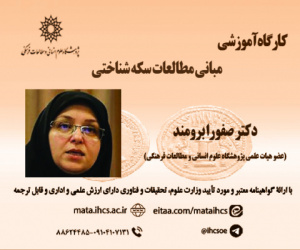بررسی تأثیر شاخص های گردشگری پایدار در جهت حفاظت از محیط زیست شهری (محور گردشگری شمال تهران) (مقاله علمی وزارت علوم)
درجه علمی: نشریه علمی (وزارت علوم)
آرشیو
چکیده
شهرها اغلب پرجمعیت هستند و فضاهای سبز محدود هستند. شیوه های گردشگری پایدار می تواند با کاهش تعداد بازدیدکنندگان و ترویج فعالیت های دوستدار محیط زیست، مانند تماشای پرندگان یا پیاده روی در طبیعت، به حفاظت از این مناطق کمک کند. از این رو، هدف این پژوهش، بررسی تأثیر شاخص های گردشگری پایدار در جهت حفاظت از محیط زیست شهری بود. روش پژوهش حاضر توصیفی-همبستگی بود. جامعه آماری گردشگران بازدیدکننده از جاذبه ها و قابلیت های گردشگری محور لواسان تا گچسر طی فروردین ماه 1403 بودند که با استفاده از فرمول کوکران و نمونه گیری تصادفی ساده، 384 نفر به عنوان نمونه آماری انتخاب شدند. برای جمع آوری داده ها از پرسشنامه شاخص های گردشگری پایدار و پرسشنامه حفاظت از محیط زیست شهری استفاده شد. یافته ها نشان داد که بین عوامل اقتصادی (تی= 3.132)، ظرفیت قابل تحمل شهر (تی= 3.091)، زیرساخت های غیر کالبدی گردشگری (تی=6.037) و زیرساخت های کالبدی گردشگری (تی=2.64) و حفاظت از محیط زیست شهری ارتباط معناداری وجود دارد. این مطالعه نتیجه می گیرد که شاخص های گردشگری پایدار را می توان برای پایش و ارزیابی تأثیر گردشگری بر محیط زیست، فرهنگ و اقتصاد استفاده کرد. این مطالعه همچنین نشان می دهد که ترویج شیوه های گردشگری پایدار، مانند کاهش ضایعات و صرفه جویی در انرژی، می تواند به کاهش اثرات منفی گردشگری بر محیط زیست کمک کند.Investigating the impact of sustainable tourism indicators on urban environment protection (North Tehran tourism hub)
Cities are often densely populated, and green spaces are limited. Sustainable tourism practices can help protect these areas by reducing the number of visitors and promoting environmentally friendly activities, such as bird watching or nature walks. Therefore, the aim of this research was to investigate the impact of sustainable tourism indicators in the direction of protecting the urban environment. The current research method was descriptive-correlation. The statistical population was the tourists who visited the tourist attractions of Lavasan to Gachsar during April 2024, and using Cochran's formula and simple random sampling, 384 people were selected as the statistical sample. To collect data, a sustainable tourism indicators questionnaire and an urban environmental protection questionnaire were used. The findings showed that there is a relationship between economic factors (T=3.132), tolerable capacity of the city (T=3.091), non-physical infrastructure of tourism (T=6.037) and physical infrastructure of tourism (T=2.649) and protection of the urban environment. This study concludes that sustainable tourism indicators can be used to monitor and evaluate the impact of tourism on the environment, culture and economy. The study also shows that promoting sustainable tourism practices, such as reducing waste and saving energy, can help reduce the negative effects of tourism on the environment.







